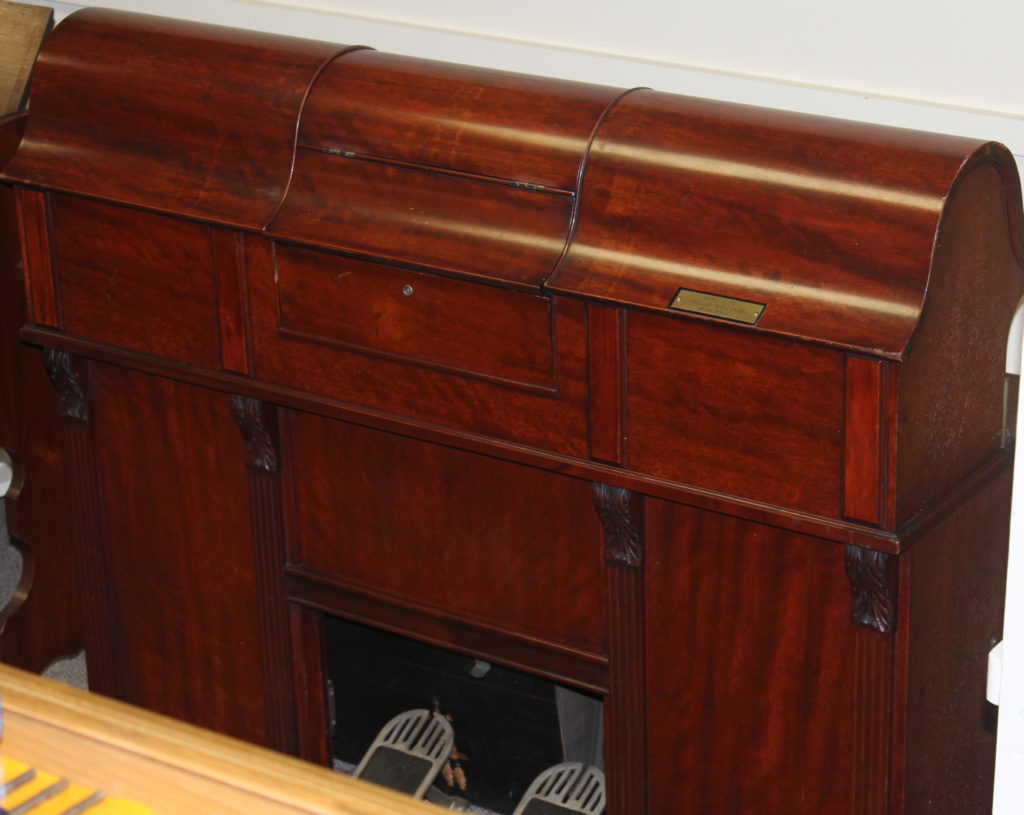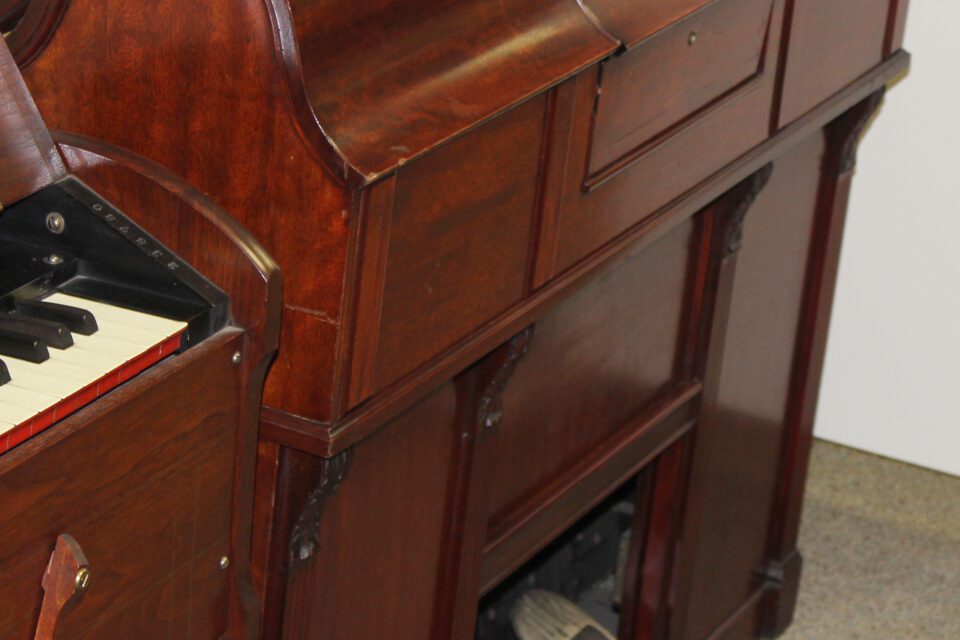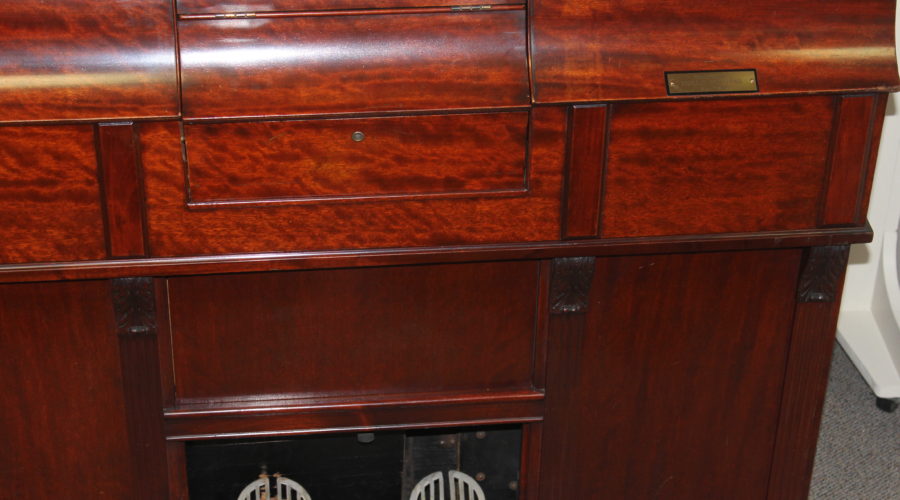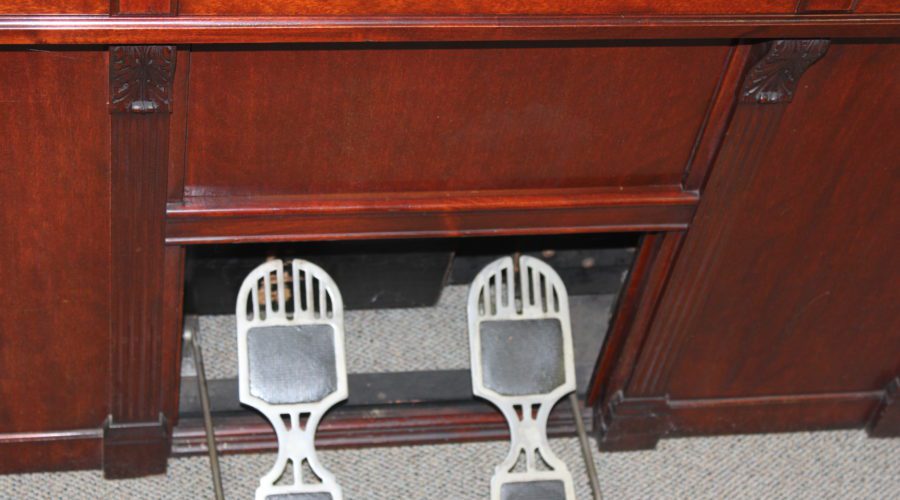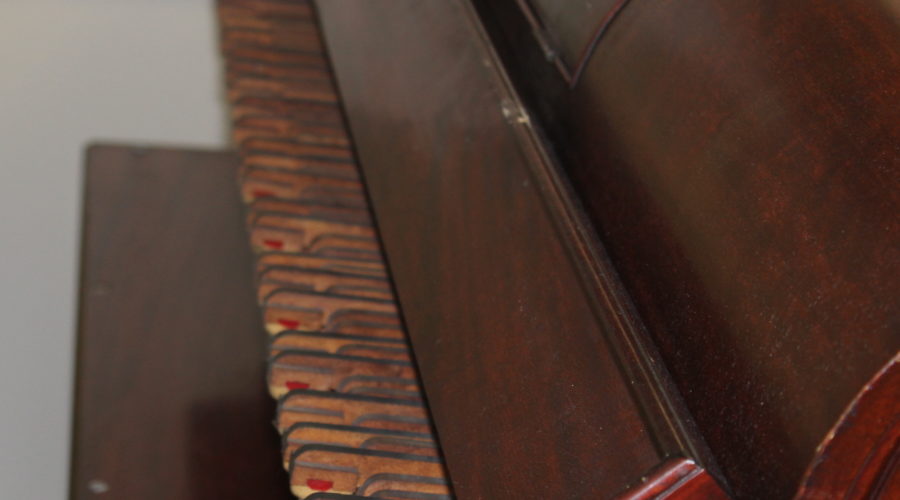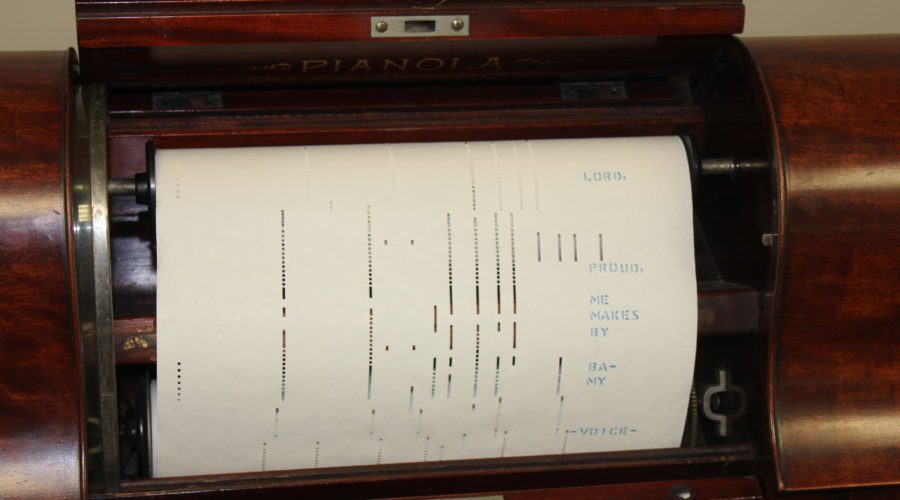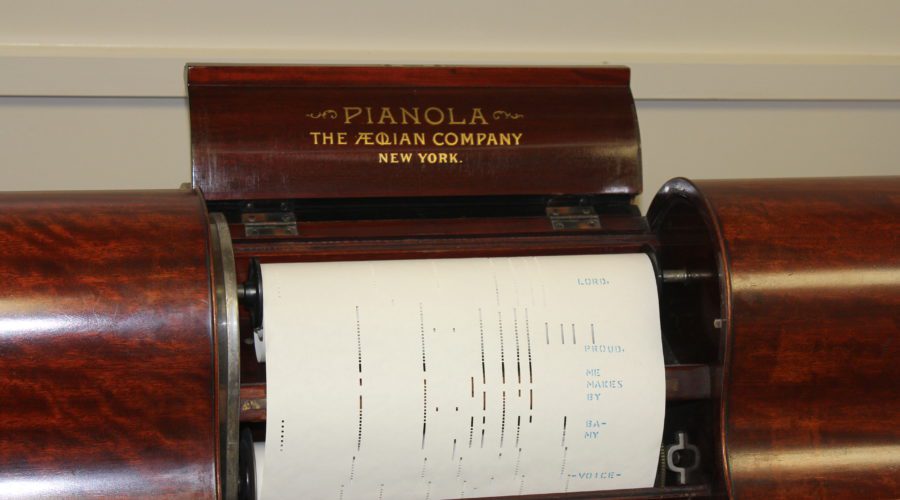The Pianola was a trademark of the Aeolian Corporation (filed in 1898), referring to a its “Piano Player,” a device that could be pushed up to the keyboard of any piano, and would play the keys of that pianos using rolls. It was a pneumatic machine, with pedal operated pump and mechanism. The trade name “Pianola” was adopted by the public and later used to refer to any player piano.
This Pianola piano-player unit was built by Aeolian in 1908. The piano-player preceded the player piano, but was the start of the trend that reinvigorated, or some would say saved, the piano industry. This unit contains no piano or piano parts. It is pushed up in front of a normal piano, a person would sit in front of this and insert the paper roll, pump the pedals, and adjust the expression controls for the piano to play. The Pianola has felt covered fingers that press down the piano keys.
The Pianola was invented and patented by Edwin Scott Votey, who built the first one in Detroit, Michigan in 1895. Aeolian had the first Pianolas for sale in 1898. The name Pianola was taken by the public to be a generic name when other companies built similar units. Later, when Aeolian started building player pianos with the playing mechanism inside of the piano case, they kept using the name Pianola, because it was so well known.
